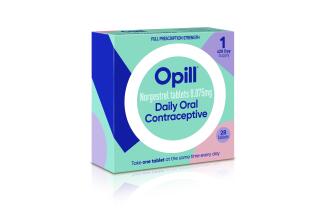Birth Control Implant Found Safe : Panel’s OK Clears Way for Use of Five-Year Contraceptive
- Share via
NEW YORK — A simple five-year contraceptive that is injected just beneath the skin of a woman’s upper arm has been found safe and effective by World Health Organization experts, opening the way for worldwide use, the Population Council said Saturday.
Council President George Zeidenstein called it “the most important new contraceptive system since the pill.” The injection contains progestin, which has been used in birth control pills for years, but the implant appears to be safer and even more effective.
The implant has been field-tested by 14,000 women in 14 nations, including about 800 in the United States, and recently was approved for general use in Sweden and Finland. It is estimated to cost from $30 to $60.
FDA Approval Sought
The U.S. Food and Drug Administration will be asked to approve the drug for use in this country in a few months and will take action in two or three years, said Dr. Wayne Bardin, Population Council vice president and director of the council’s center for biomedical research.
The council, a private research organization, also is preparing applications for general use in 40 other nations.
The implant, six micro-capsules injected just under the skin on the inside part of a woman’s upper arm, is more effective than the pill and as effective as sterilization--but the effect of the implant can be reversed by having it removed, Bardin said.
The implant--called the NORPLANT system, made by Leiras Pharmaceuticals in Turku, Finland--cannot be seen but can be felt if the skin on top of it is touched.
‘Giant Step’
George Zeidenstein, council president, called the WHO report “a giant step toward worldwide acceptance and availability.”
The report, to be published in the Bulletin of the World Health Organization in June, makes these points:
--Animal studies indicate that the drug used in the implant is safe for use in humans; extensive clinical studies have so far not shown any major adverse side effects.
--The annual pregnancy rate is low--from 0.2 to 1.3 per 100 women during the five-year period. The implants can be removed at any time. If continuation is desired, another set of capsules can be implanted for five more years.
--Because of the small dosage of birth control drug released over five years, potential side effects are minimized.
No Estrogen Used
The 1-inch-long capsules are injected through a needle about the thickness of the lead in a pencil, Bardin said. Each silicone rubber capsule contains progestin, an ingredient long included in oral contraceptives. No estrogen is used. The chemical is released gradually over five years.
Bardin said women on the pill get from 100 to 500 micrograms of progestin a day. By contrast, the implant releases 30 micrograms daily.
The implant was developed by the council over the last 20 years during research funded by the U.S. government, governments of other nations, the Rockefeller Foundation, philanthropists and other foundations.
“We are concerned about women’s health,” Bardin said. “In many countries, pregnancy is a major cause of death.”
Bardin said the five-year birth control system provides contraception by at least two mechanisms: ovulation is inhibited in 50% of the menstrual cycles, and the cervical mucus becomes thickened and impedes sperm penetration.
Restrictions on Use
The council said the system should not be used by women who have liver disease or breast cancer, or women who have abnormal uterine bleeding.
“Care should be taken to avoid use by women who are already pregnant,” the council said. “And until studies are completed and results analyzed about the effect of the method on the health and growth of infants, the implants are not recommended for women who are breast feeding.”
Clinical trials with the NORPLANT system have been under way since 1975 at clinics in California and New Jersey.
One, run by the USC Medical School, is at the USC Medical Center Women’s Hospital. Another is at San Francisco General Hospital, directed by University of California at San Francisco Medical School. The third, under the direction of Rutgers University School of Medicine, is at Middlesex Hospital, New Brunswick, N.J.
More to Read
Sign up for Essential California
The most important California stories and recommendations in your inbox every morning.
You may occasionally receive promotional content from the Los Angeles Times.










